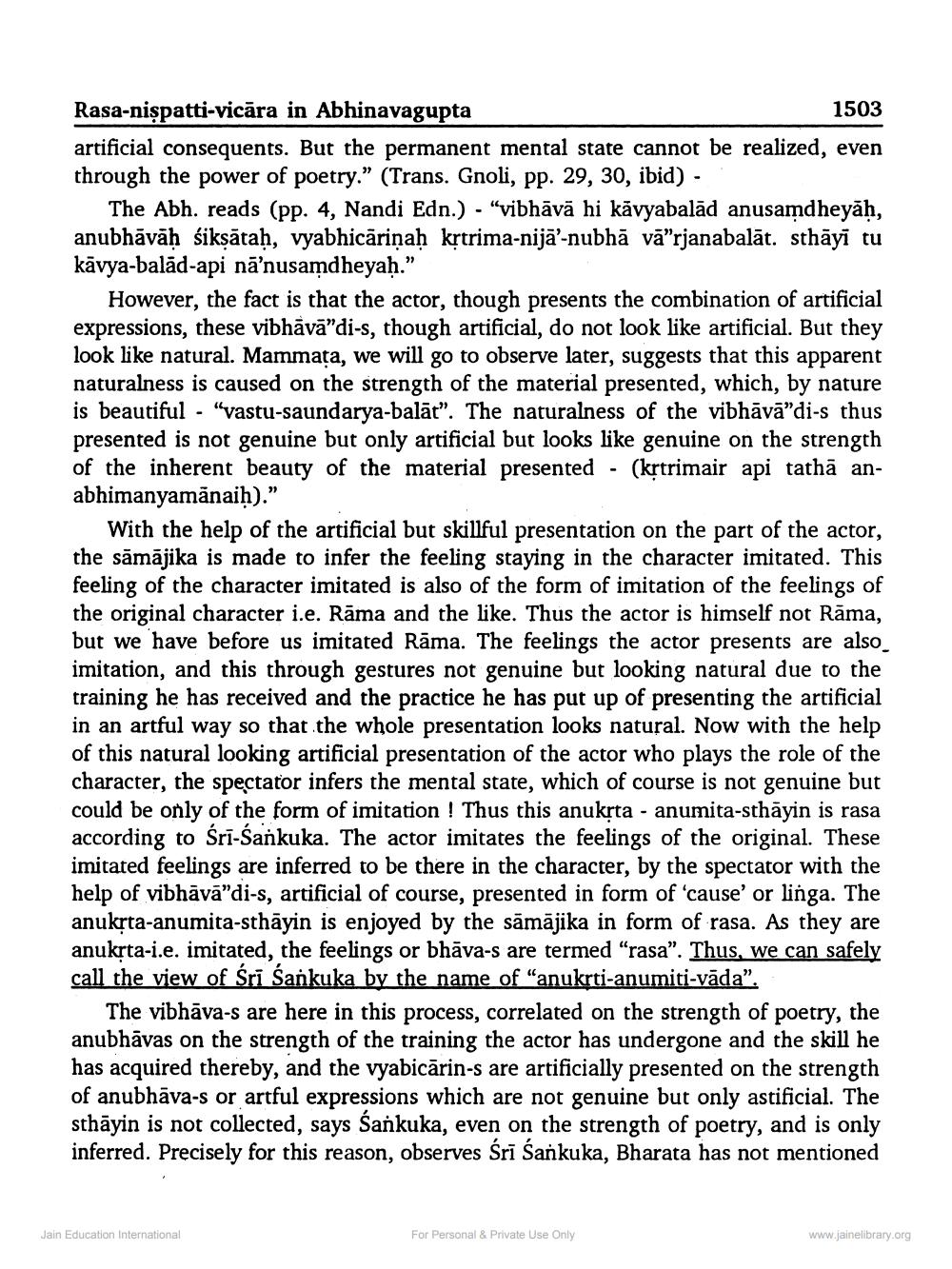________________
Rasa-nispatti-vicāra in Abhinavagupta
1503 artificial consequents. But the permanent mental state cannot be realized, even through the power of poetry." (Trans. Gnoli, pp. 29, 30, ibid) -
The Abh. reads (pp. 4, Nandi Edn.) - "vibhāvā hi kávyabalād anusamdheyāh, anubhāvāh siksātah, vyabhicărinah krtrima-nija'-nubhā vā"rjanabalāt. sthāyi tu kāvya-balād-api nā’nusamdheyah.”
However, the fact is that the actor, though presents the combination of artificial expressions, these vibhāvā"di-s, though artificial, do not look like artificial. But they look like natural. Mammata, we will go to observe later, suggests that this apparent naturalness is caused on the strength of the material presented, which, by nature is beautiful - "vastu-saundarya-balāt". The naturalness of the vibhāvā”di-s thus presented is not genuine but only artificial but looks like genuine on the strength of the inherent beauty of the material presented - (krtrimair api tathā anabhimanyamanaih).”
With the help of the artificial but skillful presentation on the part of the actor, the sāmājika is made to infer the feeling staying in the character imitated. This feeling of the character imitated is also of the form of imitation of the feelings of the original character i.e. Rāma and the like. Thus the actor is himself not Rāma, but we have before us imitated Rāma. The feelings the actor presents are also imitation, and this through gestures not genuine but looking natural due to the training he has received and the practice he has put up of presenting the artificial in an artful way so that the whole presentation looks natural. Now with the help of this natural looking artificial presentation of the actor who plays the role of the character, the spectator infers the mental state, which of course is not genuine but could be only of the form of imitation ! Thus this anukrta - anumita-sthāyin is rasa according to Sri-Sankuka. The actor imitates the feelings of the original. These imitated feelings are inferred to be there in the character, by the spectator with the help of vibhāvā”di-s, artificial of course, presented in form of 'cause' or linga. The anukrta-anumita-sthāyin is enjoyed by the samājika in form of rasa. As they are anukrta-i.e. imitated, the feelings or bhāva-s are termed "rasa". Thus, we can safely call the view of Sri Sankuka by the name of "anukrti-anumiti-vāda”.
The vibhāva-s are here in this process, correlated on the strength of poetry, the anubhāvas on the strength of the training the actor has undergone and the skill he has acquired thereby, and the vyabicārin-s are artificially presented on the strength of anubhāva-s or artful expressions which are not genuine but only astificial. The sthāyin is not collected, says Sankuka, even on the strength of poetry, and is only inferred. Precisely for this reason, observes Sri Sankuka, Bharata has not mentioned
Jain Education International
For Personal & Private Use Only
www.jainelibrary.org




